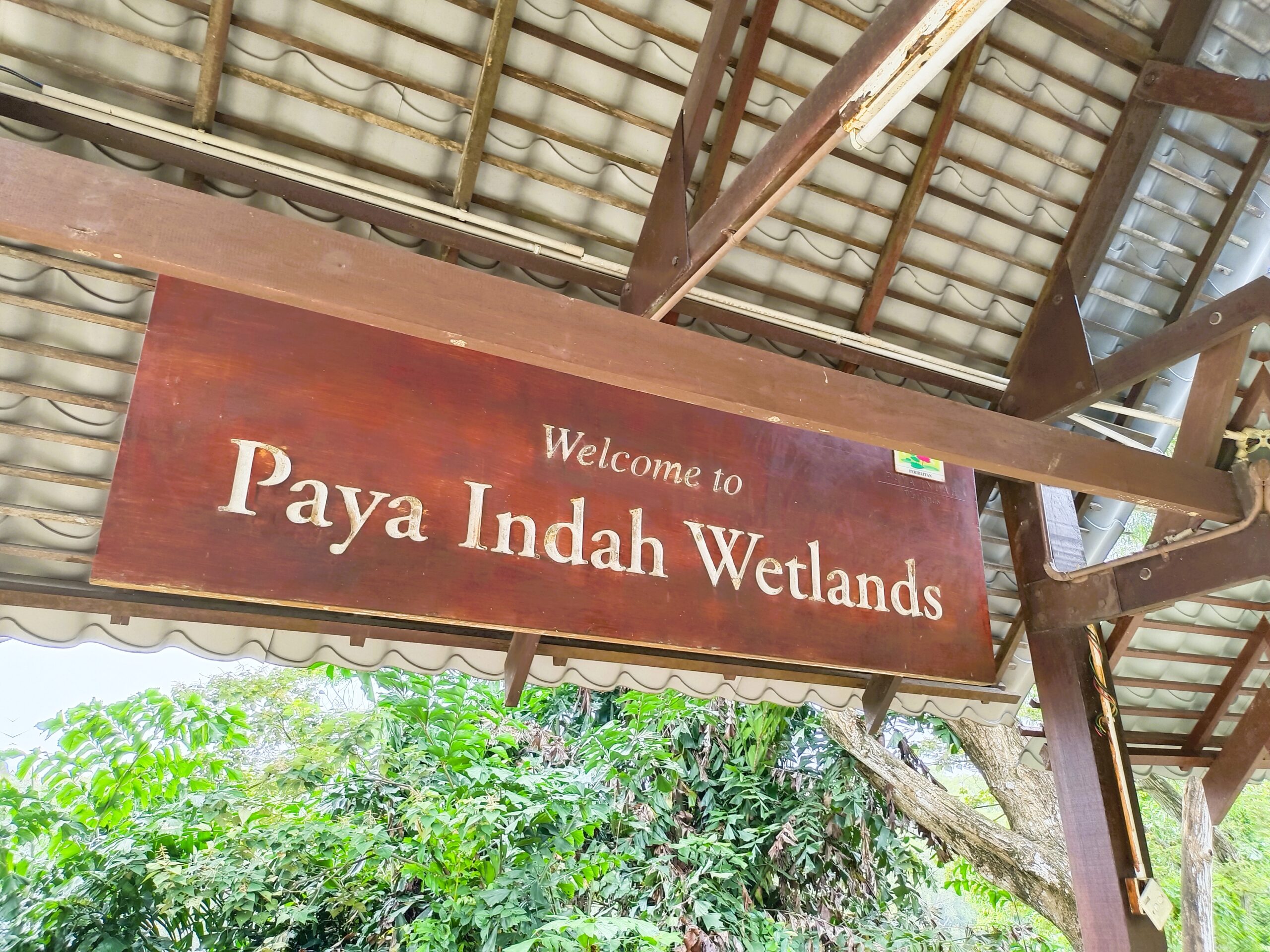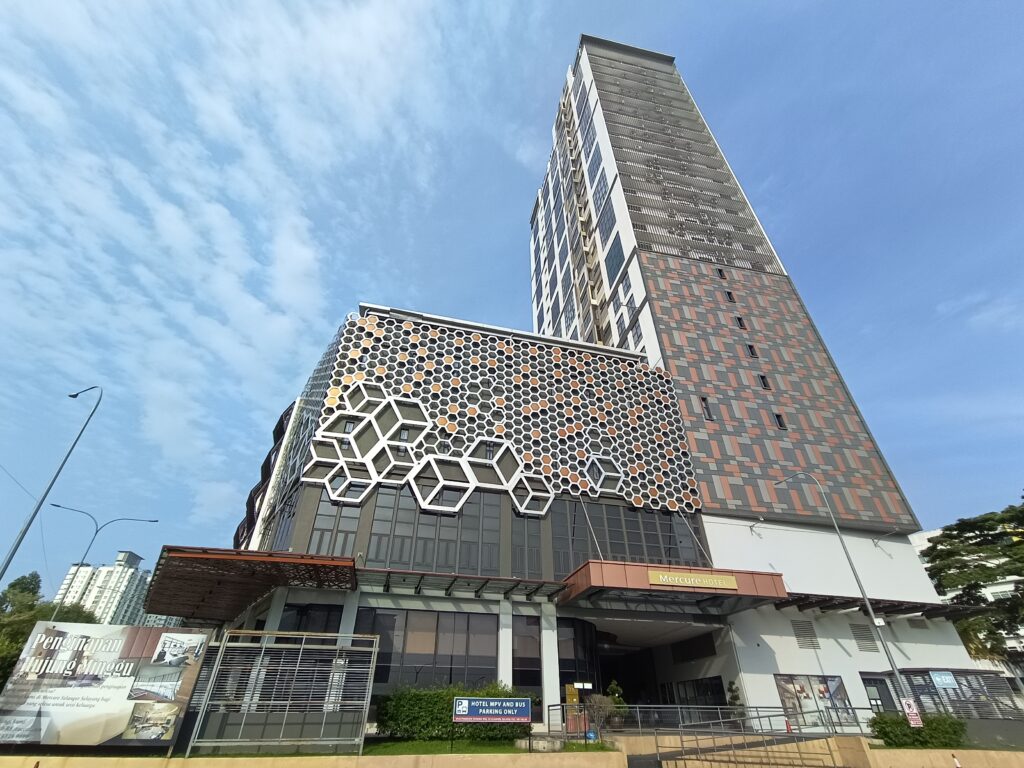
Nestled within the Mukim Tanjung Dua Belas of Selangor, Paya Indah Wetlands stands as a testament to the harmonious coexistence of man and nature. Under the stewardship of the Department of Wildlife and National Parks of Peninsular Malaysia (PERHILITAN), this 450.76-hectare sanctuary offers a tranquil escape into a world teeming with natural wonders. Emerging from the depths of time as a peat swamp forest and dotted with abandoned mining lakes, Paya Indah Wetlands has undergone a remarkable transformation. Among these, Tasik Utama, Tasik Sendayan, and Tasik Typha stand out as particularly captivating attractions.
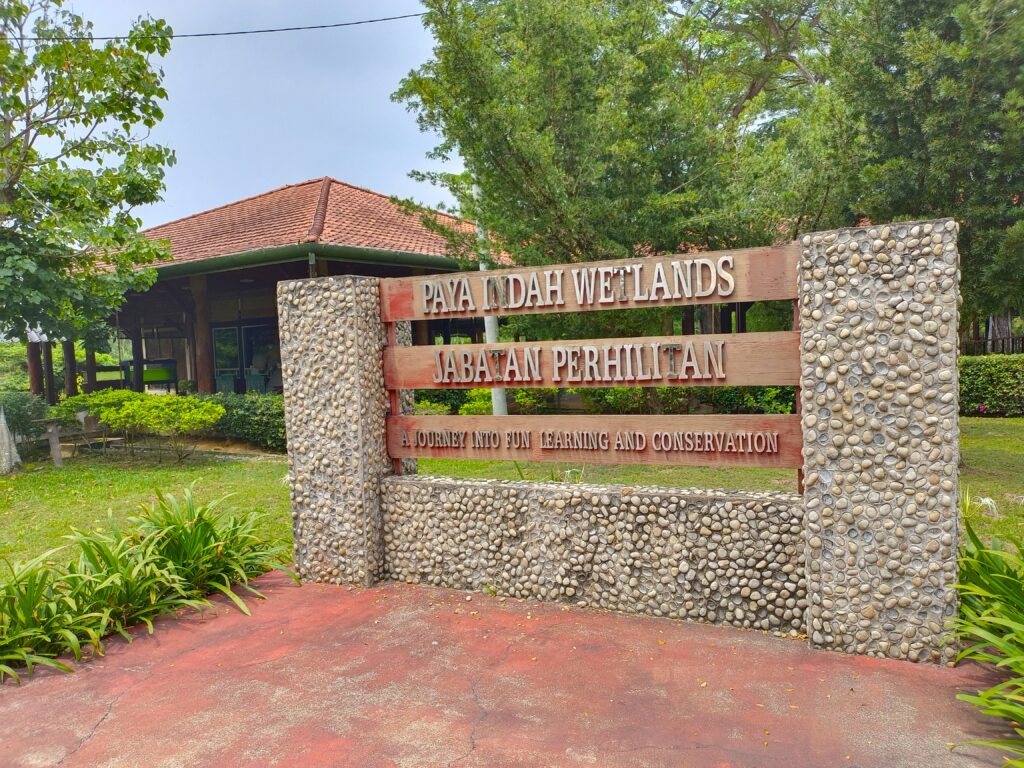
Information Center
Paya Indah Wetlands represents a significant step towards preserving the delicate balance of nature. The decision to grant free admission to this natural treasure, the authorities aim to instill a deeper understanding of the importance of environmental conservation and the vital role it plays in ensuring a sustainable future for all.
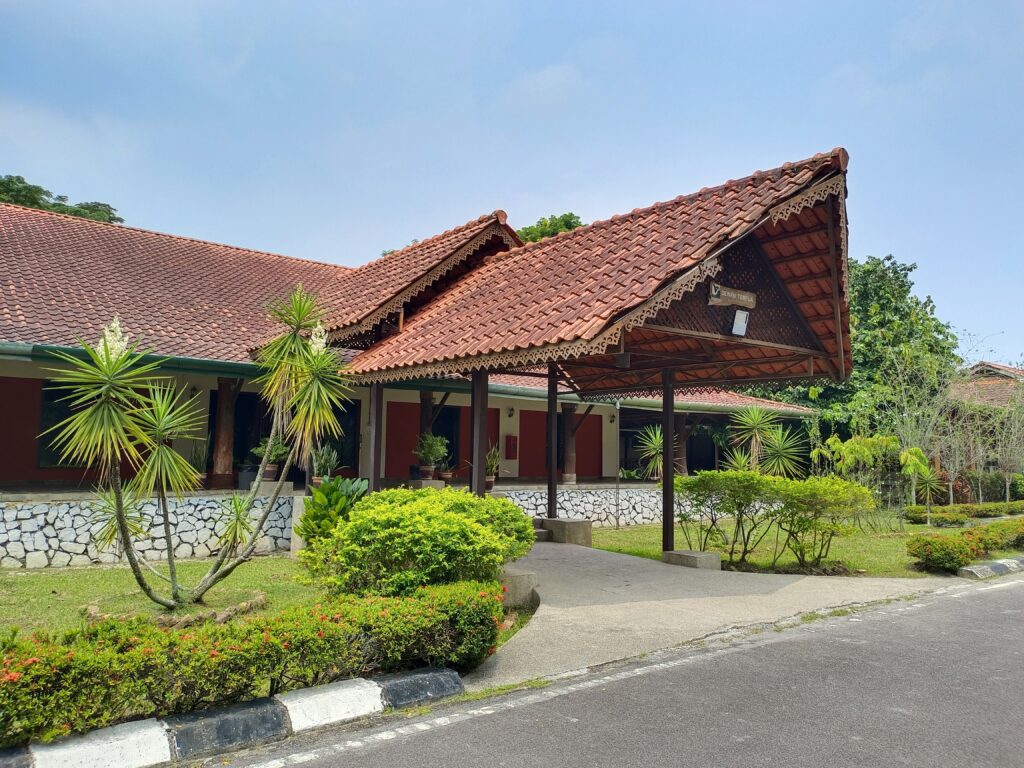
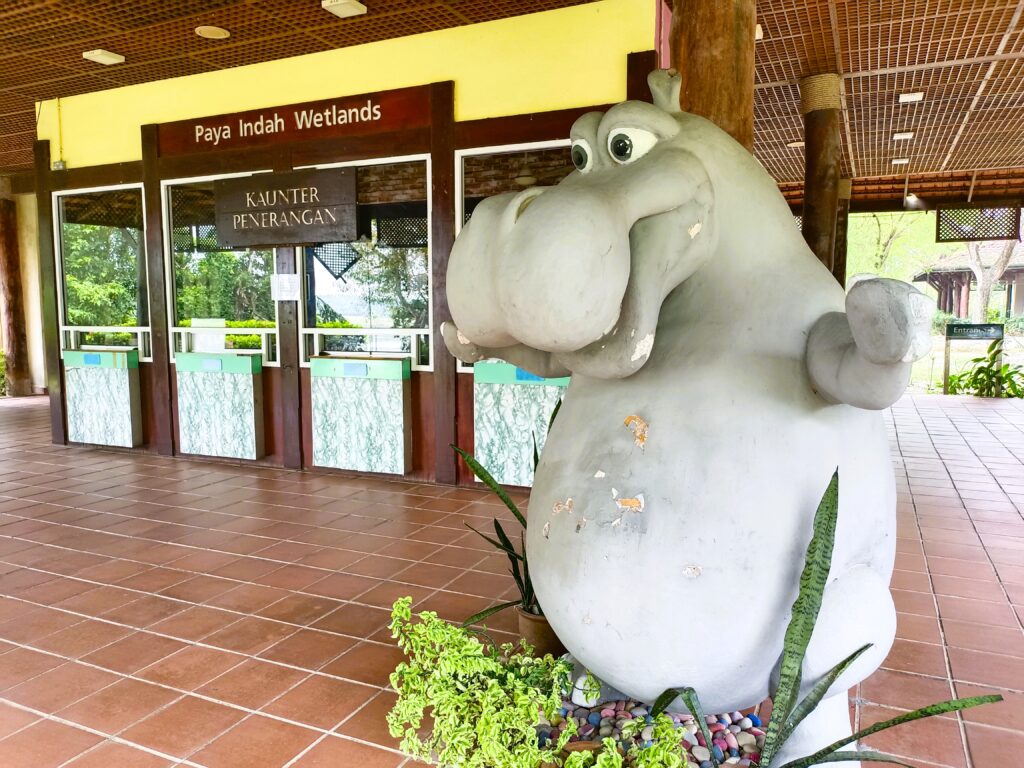
Biodiversity
Paya Indah Wetlands is not merely a scenic expanse of nature; it is a thriving ecosystem teeming with an extraordinary diversity of life. Within its boundaries, records reveal an astonishing 235 species of birds, 63 species of mammals, 20 species of reptiles, 10 species of amphibians, and 14 species of fish. The wetlands have also played a crucial role in ex-situ conservation efforts, providing a safe haven for several species that have faced threats in their natural habitats. These include:
- Saltwater crocodile (Crocodylus porosus)
- Hippopotamus (Hippopotamus amphibius)
- Tortoise (Various species)
- Indian peafowl @Blue peafowl (Pavo cristatus)
- Malayan Porcupine (Hystrix brachyura)
- Lesser mousedeer (Tragulus kanchil)
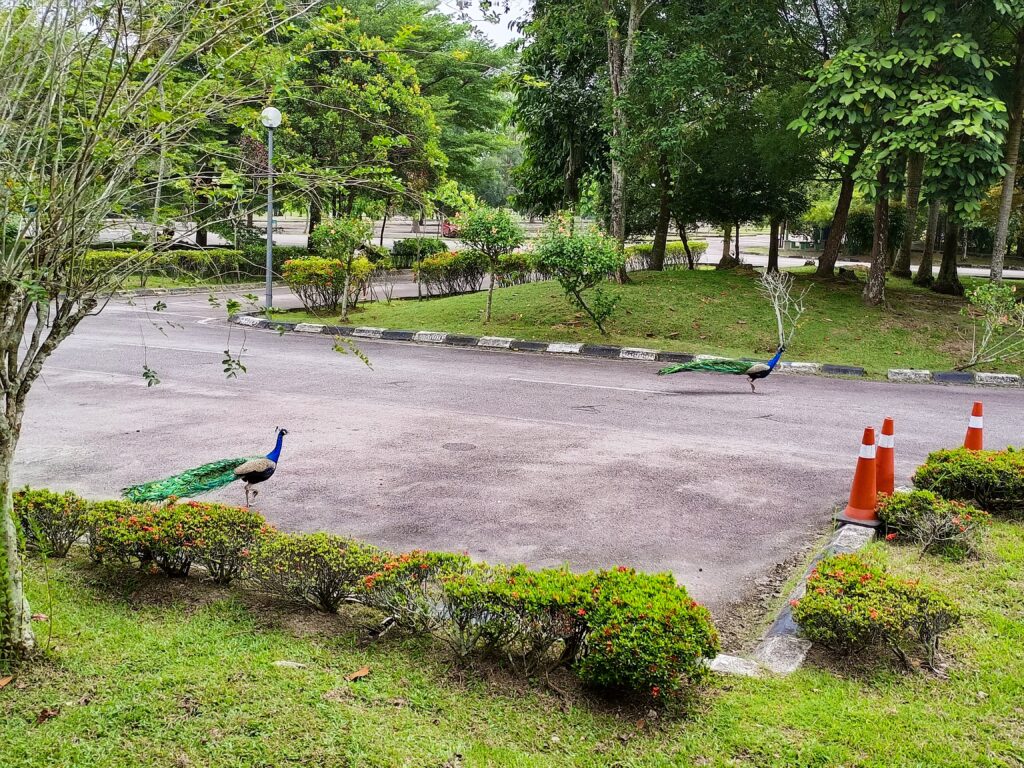
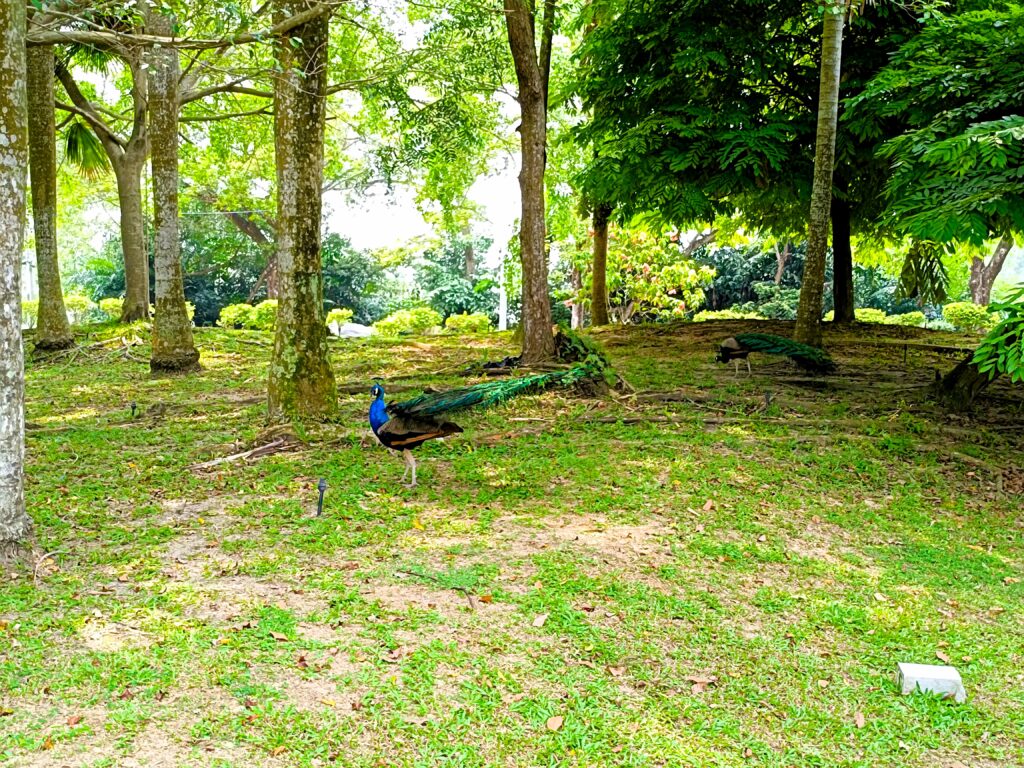
Without further ado, let’s venture into the heart of Paya Indah Wetlands and uncover the treasures that lie within.
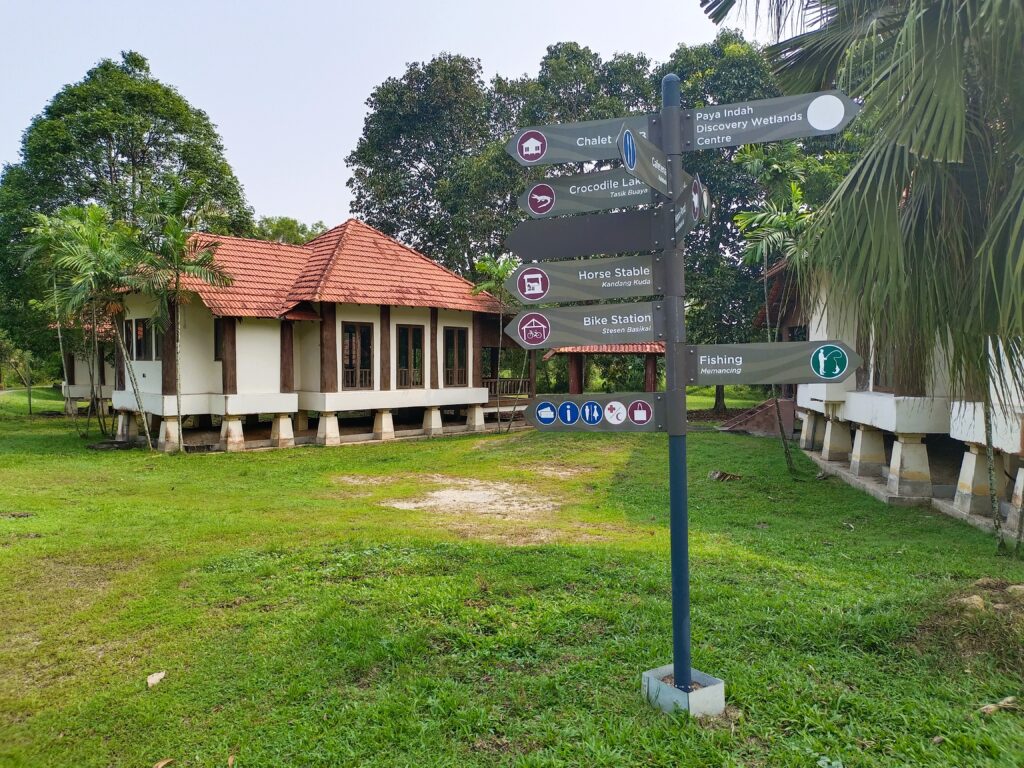
Kolam Hippo: A Glimpse into Hippo Life
As we embark on our exploration of Paya Indah Wetlands, our first destination is none other than the remarkable Hippopotamus, the third-largest land animal on Earth.

Taking center stage are Baby (male) and Lily (female), two adorable hippopotamus calves who have captured the hearts of visitors with their playful antics and endearing charm.
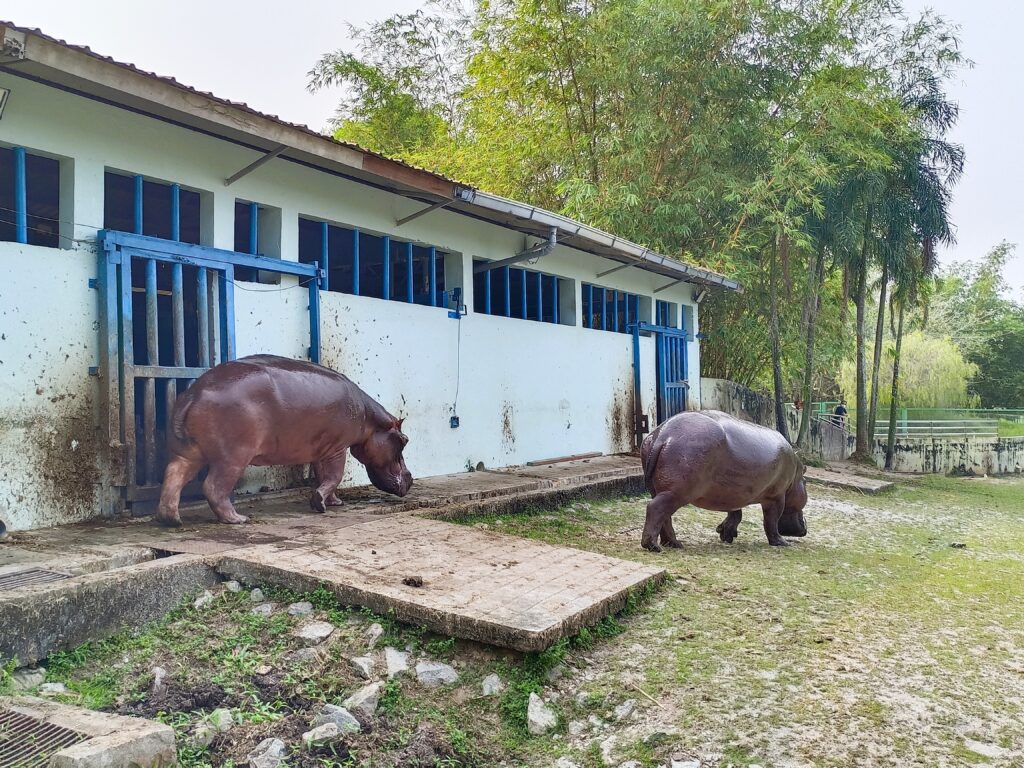
Baby and Lily may still be considered “babies” in the hippopotamus world, but their size is already impressive!
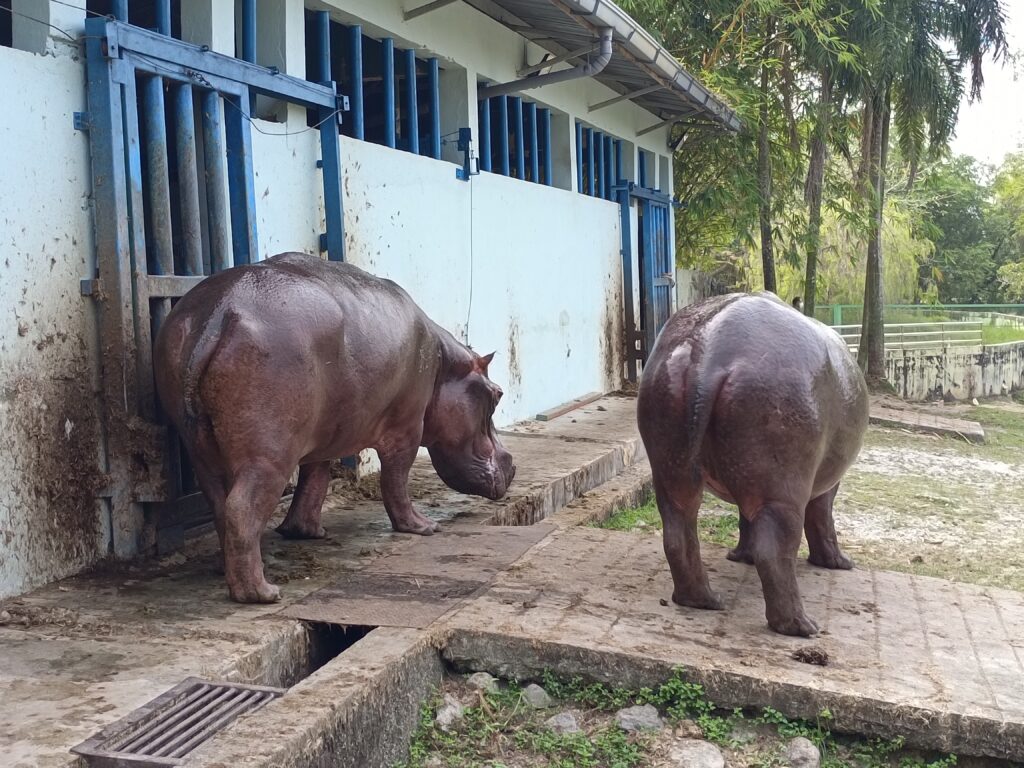
As the clock strikes 10:00 AM, a crowd of eager visitors has assembled around the hippopotamus enclosure. The atmosphere is buzzing with excitement as everyone waits for the opportunity to feed these giants.
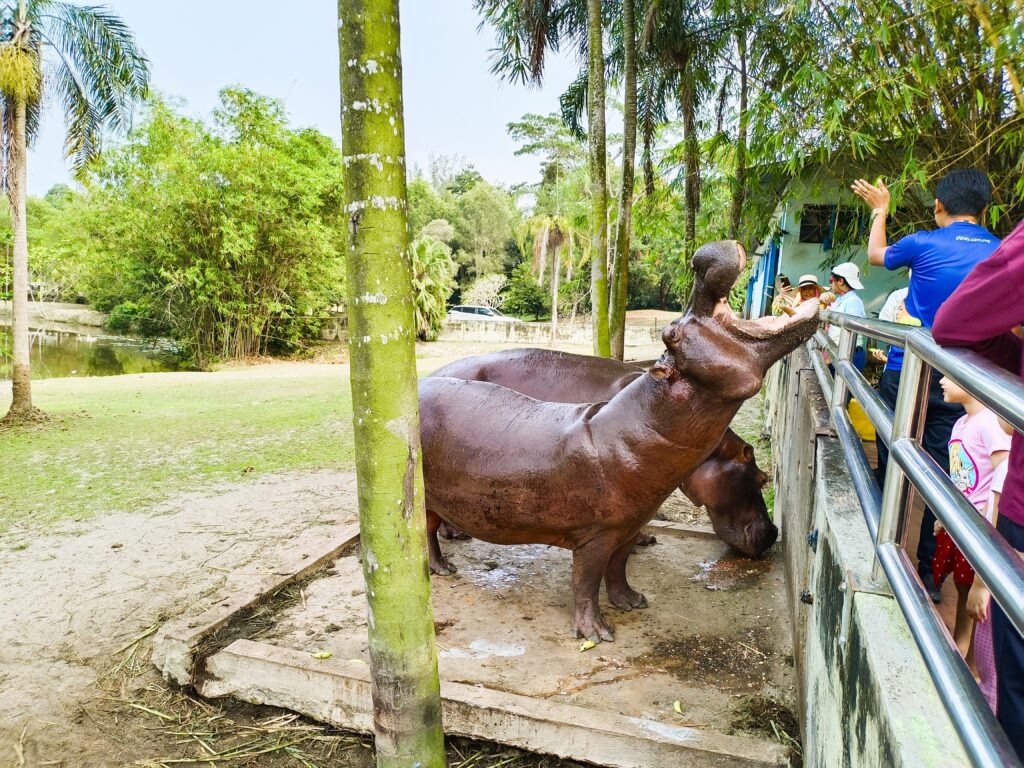
Today’s feast features a delectable array of fruits, including bananas, papaya, and watermelon. These colorful treats are sure to tantalize the taste buds of our hippopotamus friends.
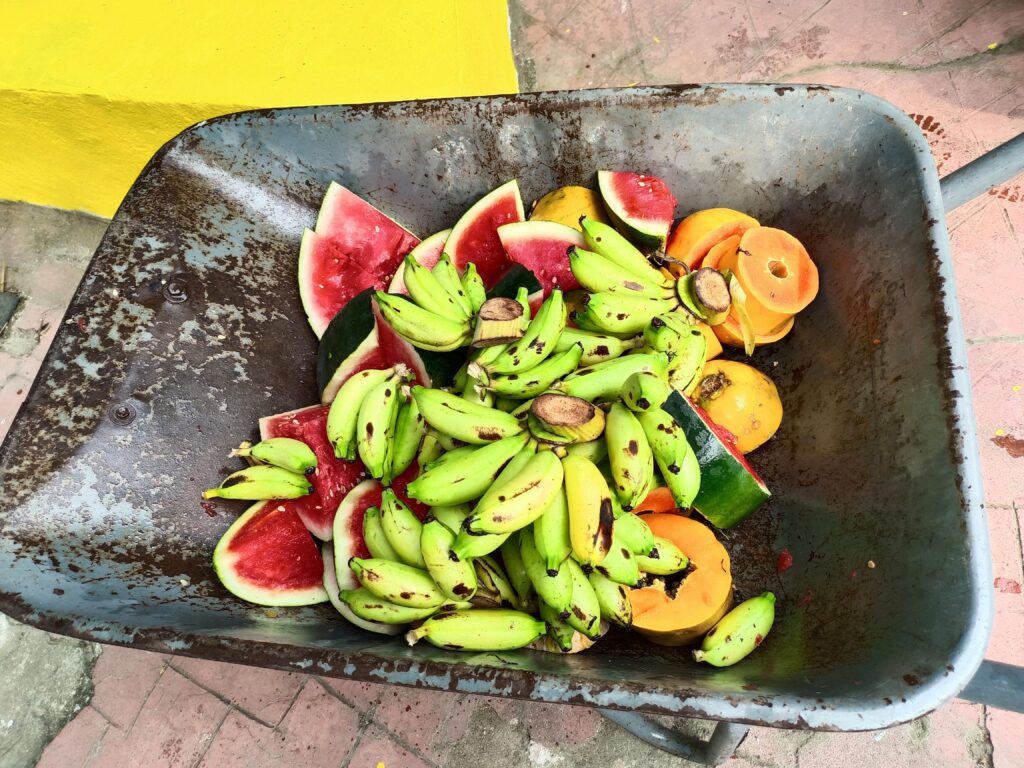
Before the feeding commences, a park ranger provides clear instructions to ensure the safety and well-being of both the visitors and the hippopotamuses. Visitors are reminded to maintain a safe distance and avoid making any sudden movements that could startle the animals.
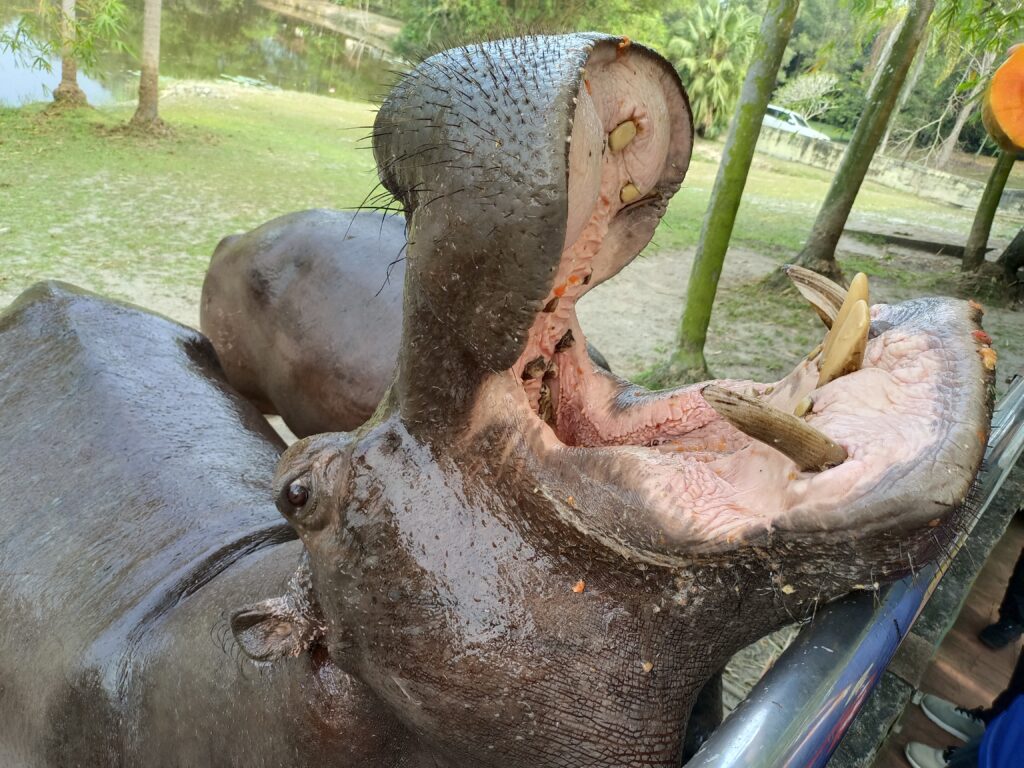
The ranger first demonstrates the proper feeding technique, carefully holding the fruit up to the hippopotamus’s nose before gently placing it into their mouths. This demonstration ensures that visitors have a clear understanding of the feeding process and can proceed safely.
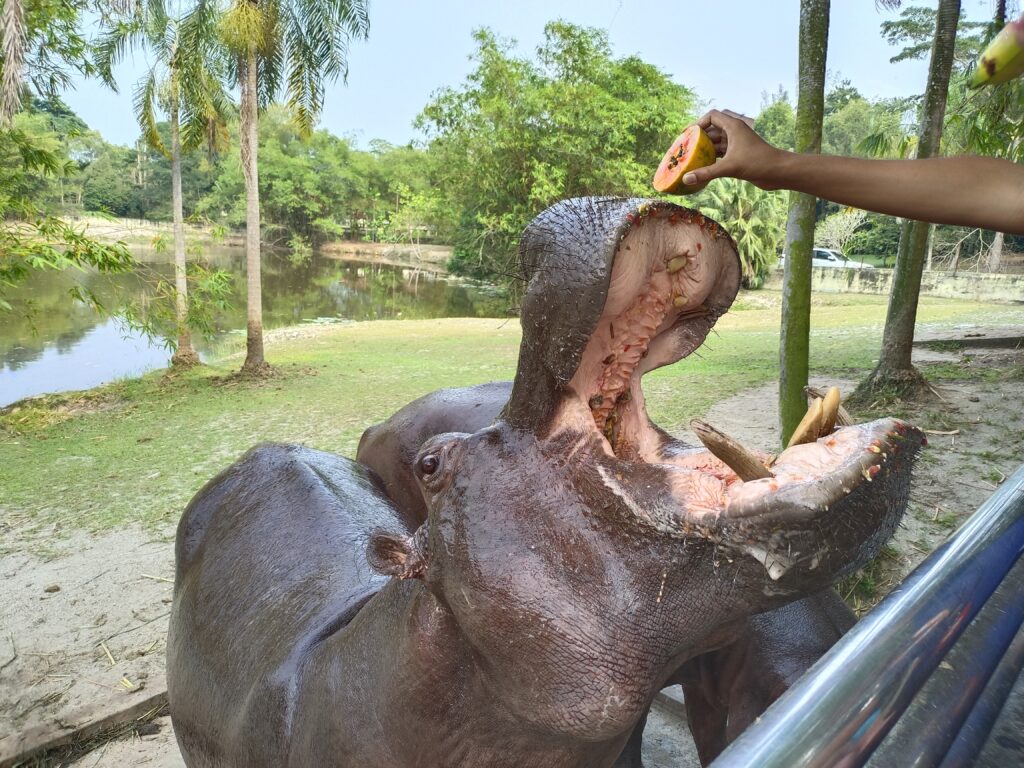
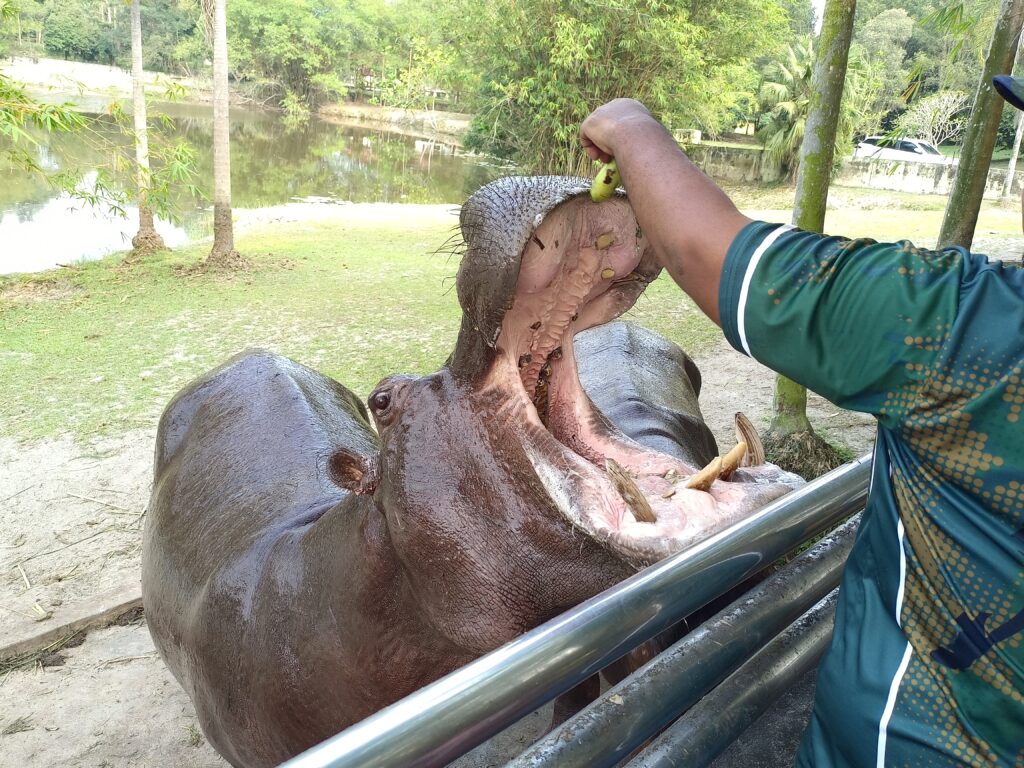
With the ranger’s guidance, visitors take turns feeding Baby and Lily. The joy on their faces is evident as they watch the hippopotamuses eagerly consume the delicious treats.
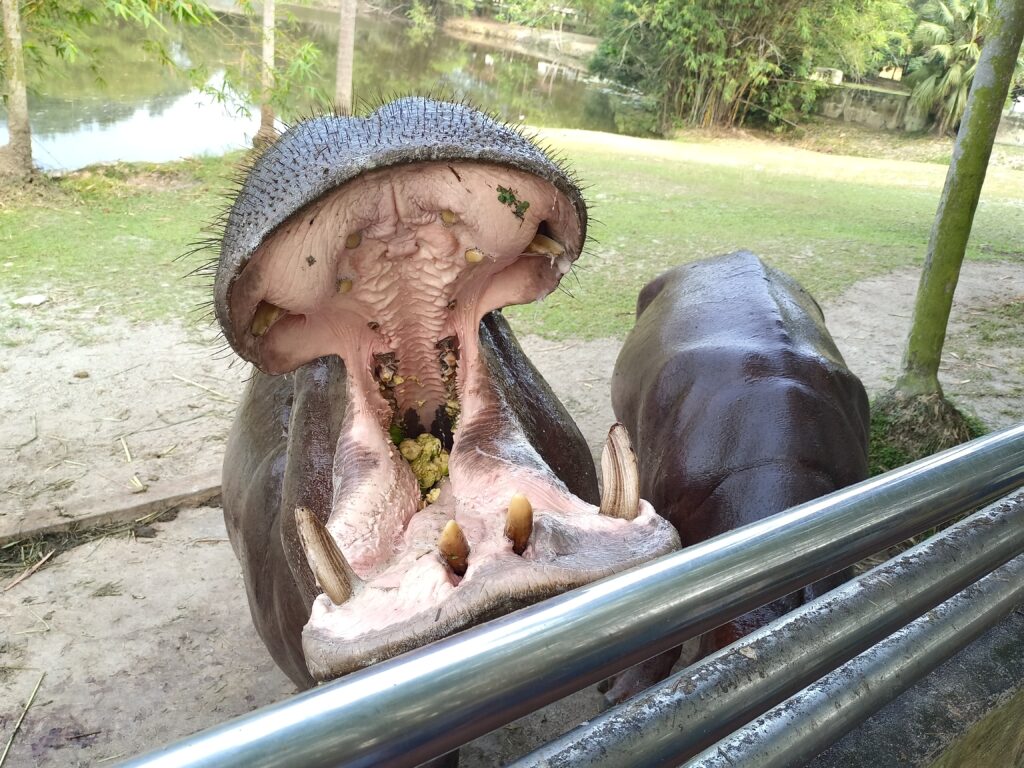
In the background, a refreshing pond provides the hippopotamuses with an escape from the heat of the day. These aquatic creatures often spend hours wallowing in the cool water, enjoying the respite from the sun’s rays.

Baby and Lily relish each bite, their mouths widening in satisfaction as they savor the sweet flavors of the fruits. The visitors, too, feel a sense of fulfillment as they witness the hippopotamuses’ enjoyment.
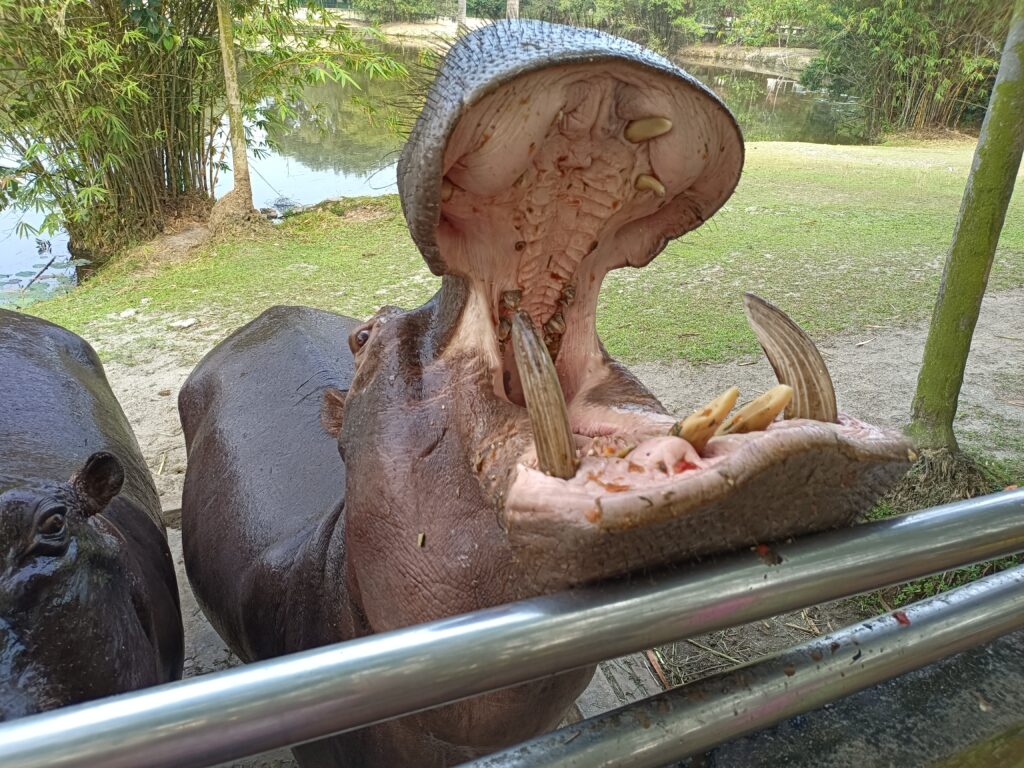
While the fruits may be a delightful treat, it’s important to remember that Napier grass is the hippopotamus’s main source of nutrition. Their massive bodies require a substantial amount of food, and grass provides the essential energy they need to thrive.
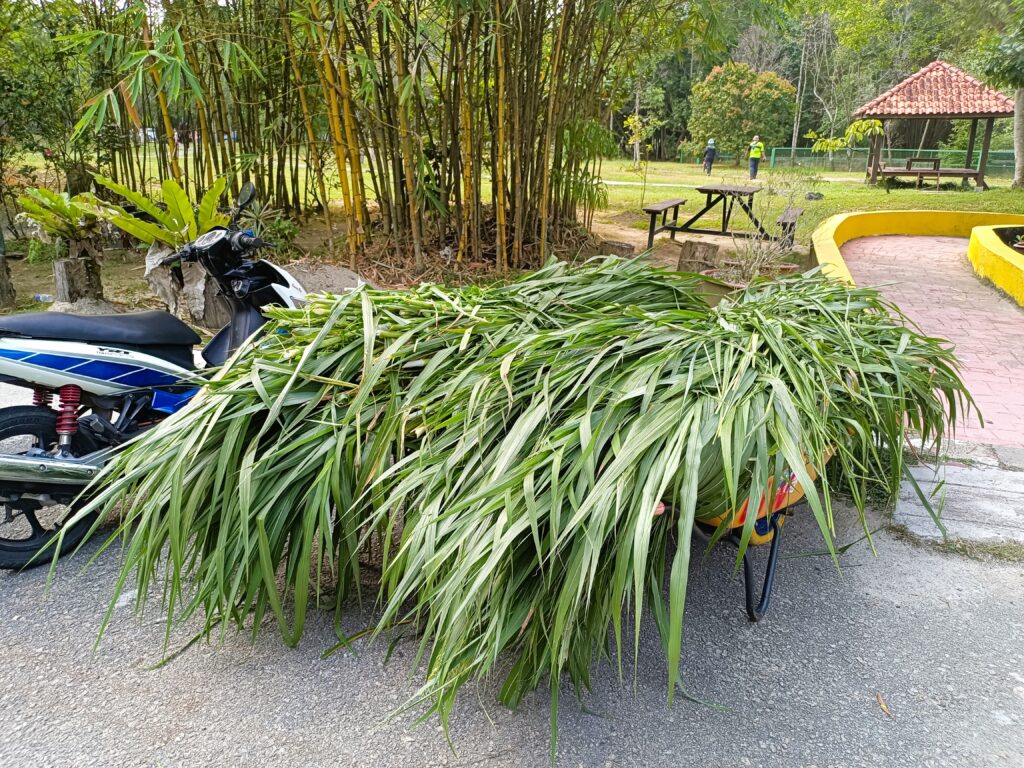
With our hearts filled with the joy of witnessing these adorable hippopotamus calves, we move on to the next exciting destination on our Paya Indah Wetlands exploration.
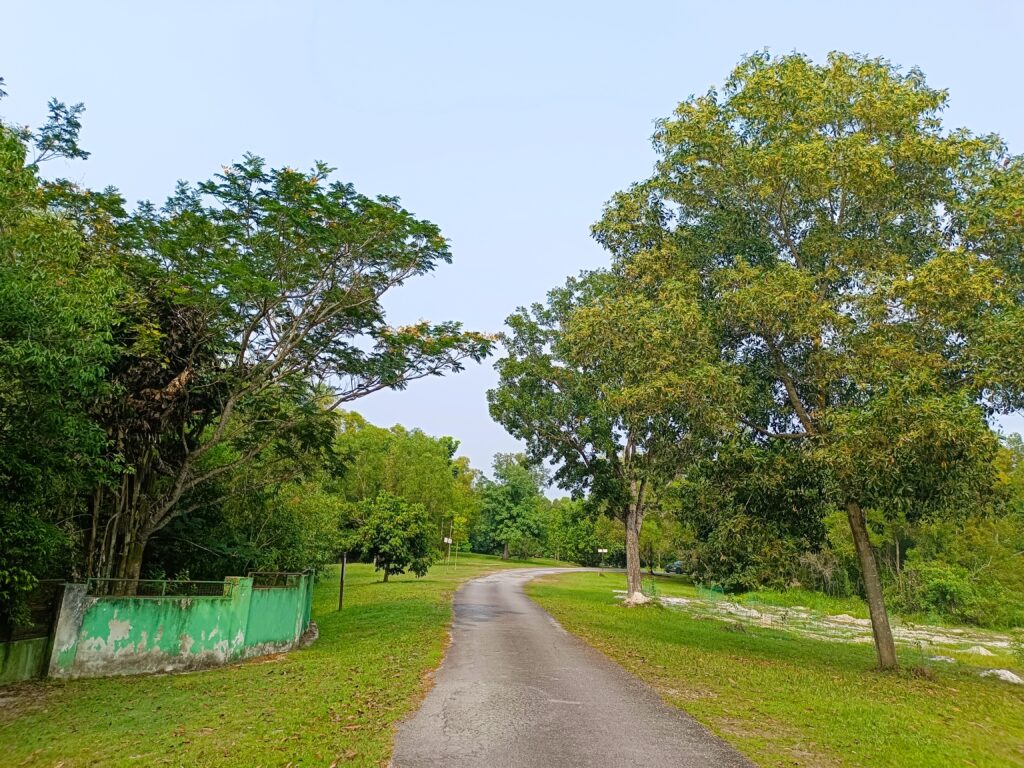
Crocodile Lake
As we continue our exploration of Paya Indah Wetlands, we find ourselves drawn to the Crocodile Lake once again, this time to witness the captivating spectacle of crocodile feeding. This unique experience, currently offered only on weekends and public holidays, provides a fascinating glimpse into the feeding habits of these ancient predators.
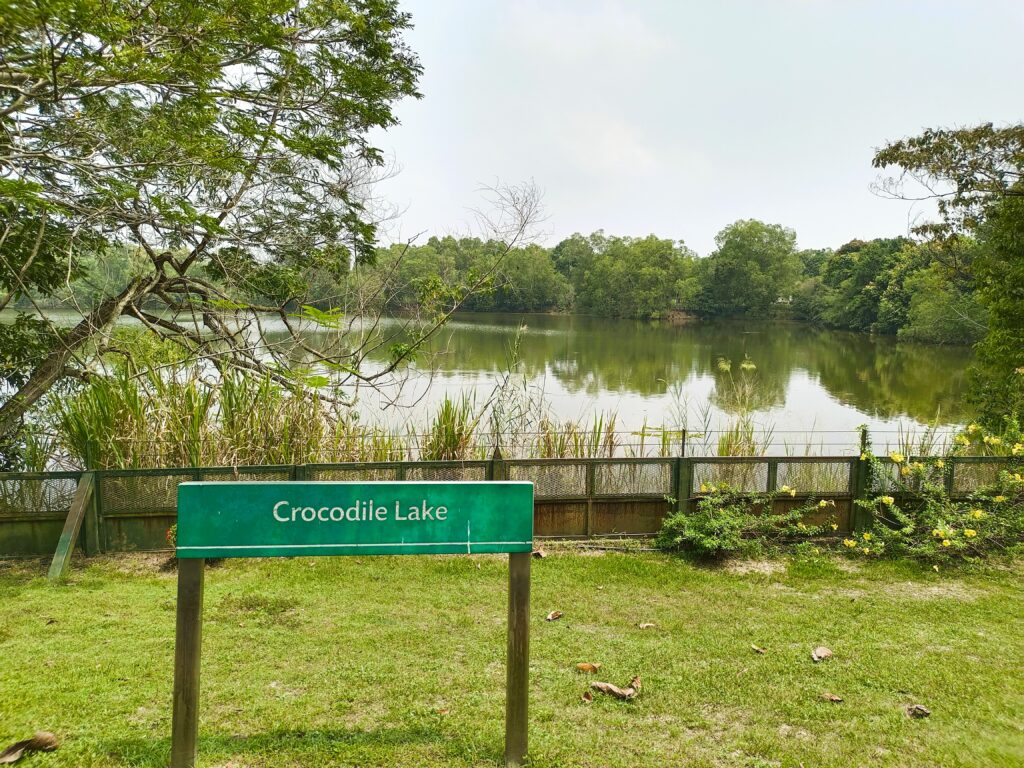
A crowd of eager visitors has gathered along the viewing platform, their eyes fixed on the tranquil waters of the lake. The anticipation is palpable as they await the arrival of the crocodiles, drawn by the promise of a delectable meal.
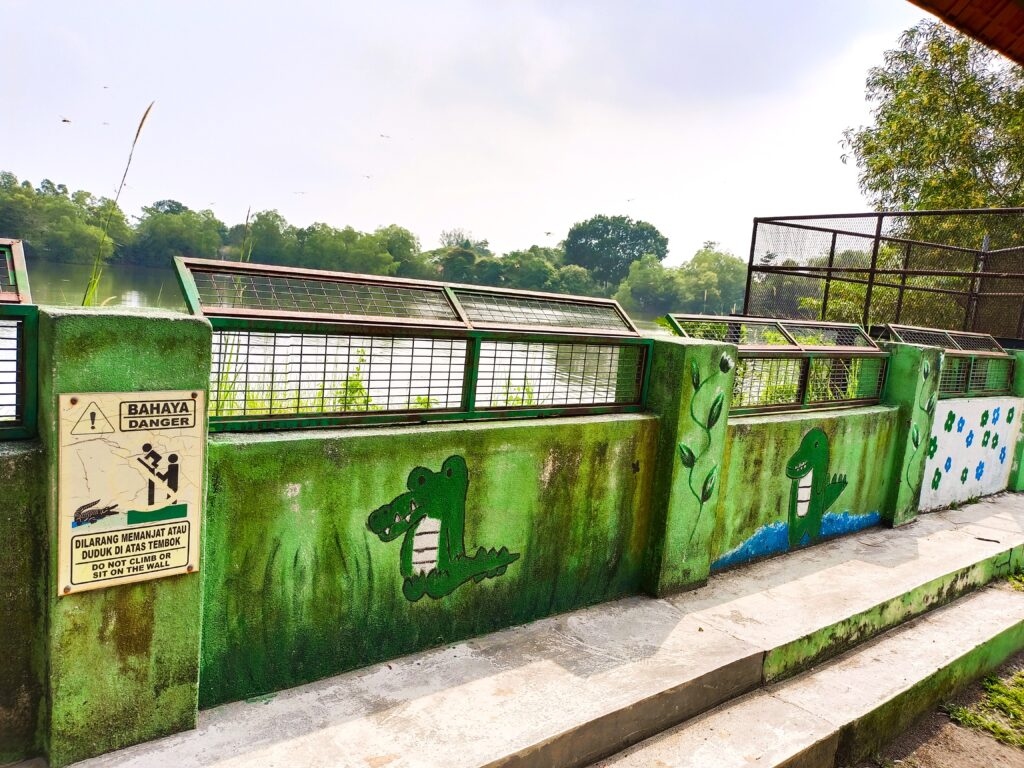
As the clock strikes approximately 11:00 AM, a stirring break the surface of the water. One by one, the crocodiles emerge from their aquatic realm, their sleek bodies glistening in the sunlight.
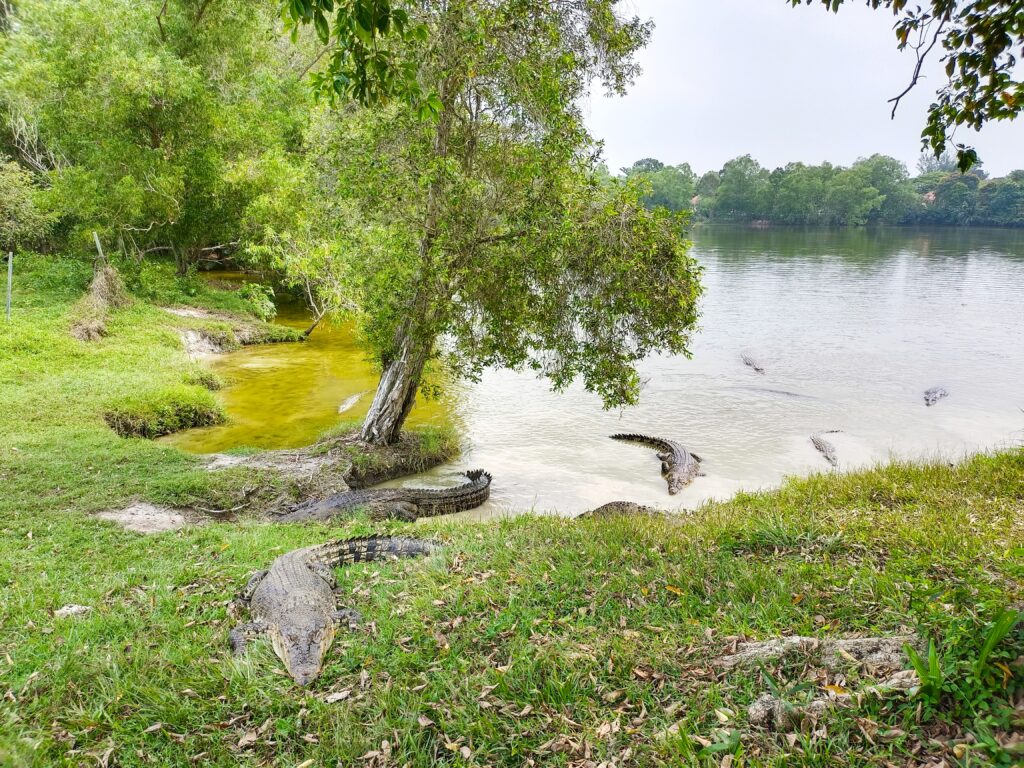
Park rangers, armed with whole chickens, take their positions along the edge of the lake. With practiced throws, they launch the poultry into the air, sending them soaring towards the hungry crocodiles.
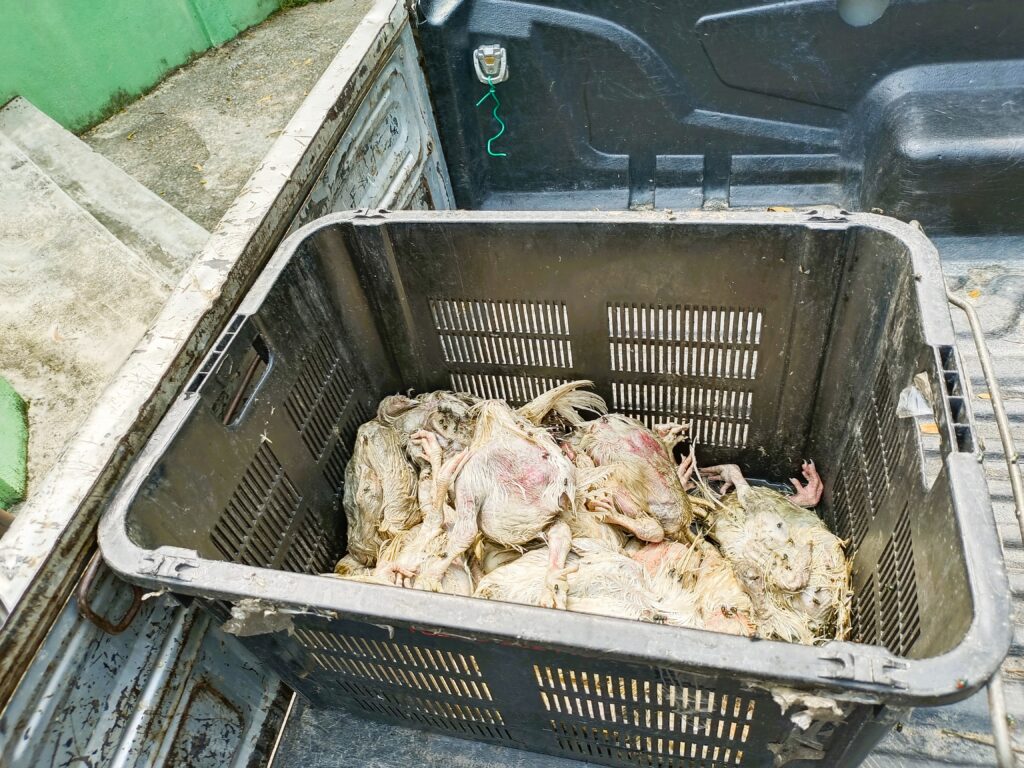
The crocodiles are quick to react, their movements a blur as they lunge towards the falling chickens. Their powerful jaws snap shut with a satisfying crunch, securing their prize.

The crocodiles retreat to their basking spots, their bellies full and their appetites satiated. They savor the flavors of their meal, their reptilian bodies basking in the warmth of the sun.
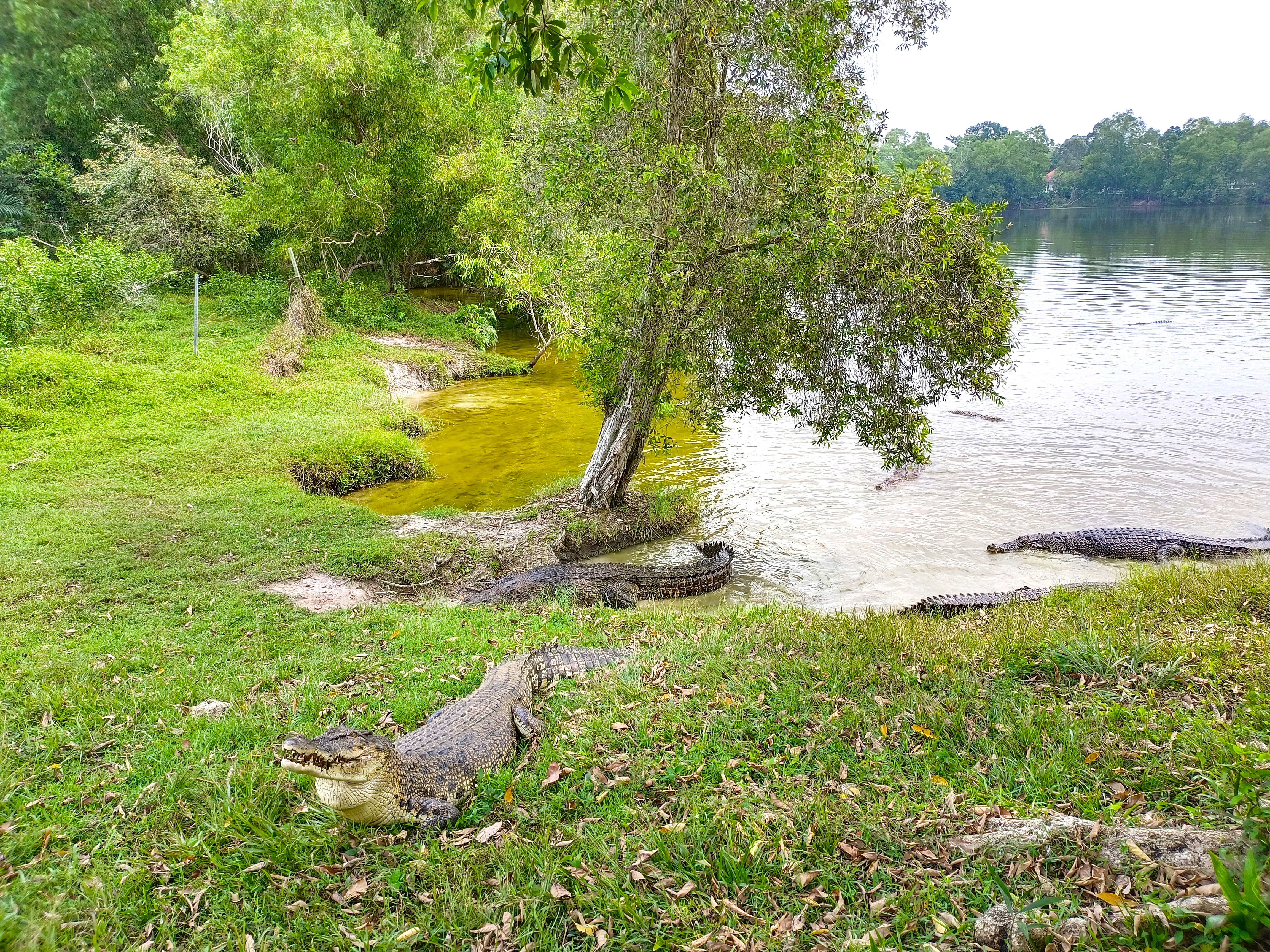
Laman Fauna
看完了鳄鱼园区,我们来到另一处
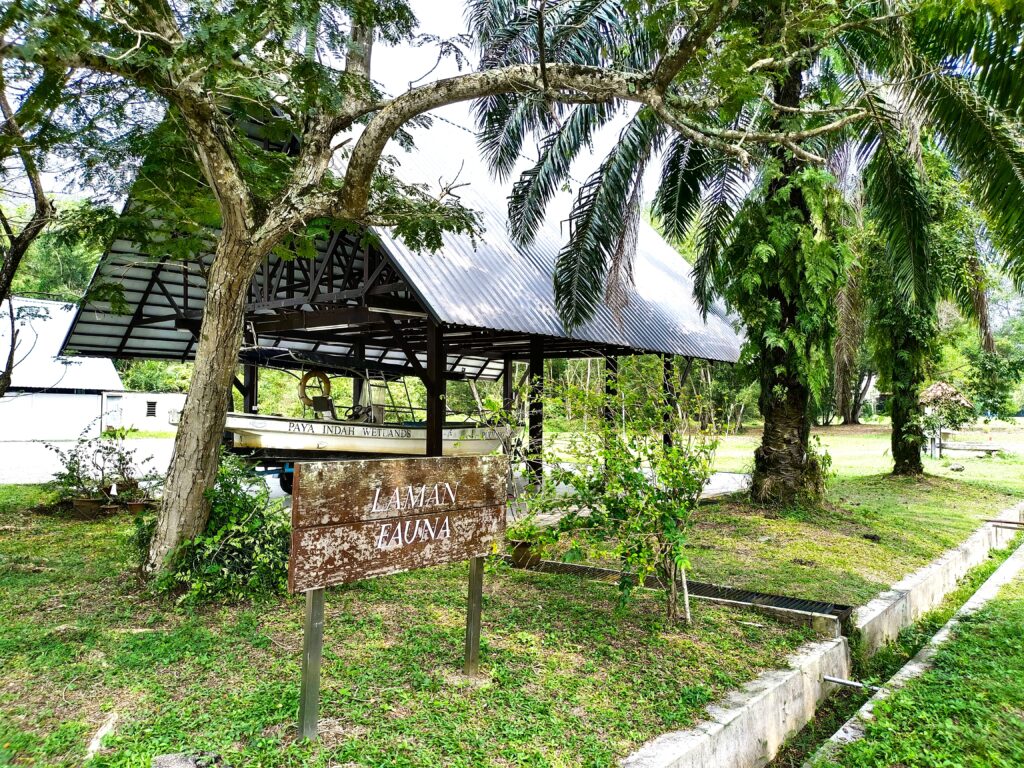
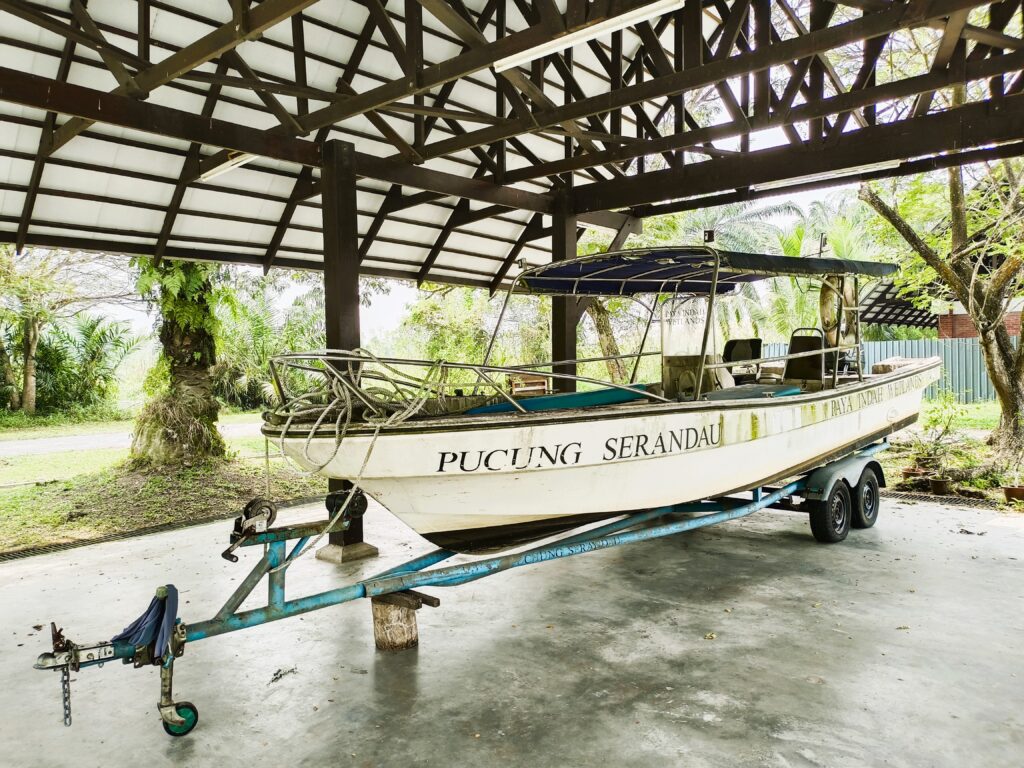
Tortoise Pond

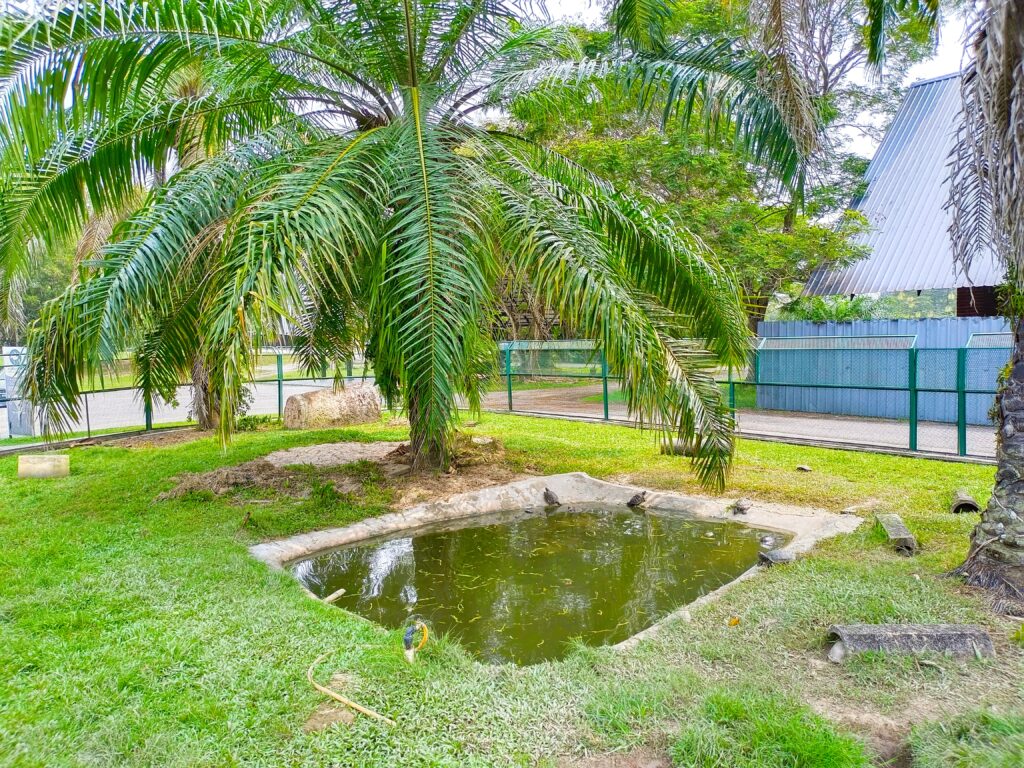
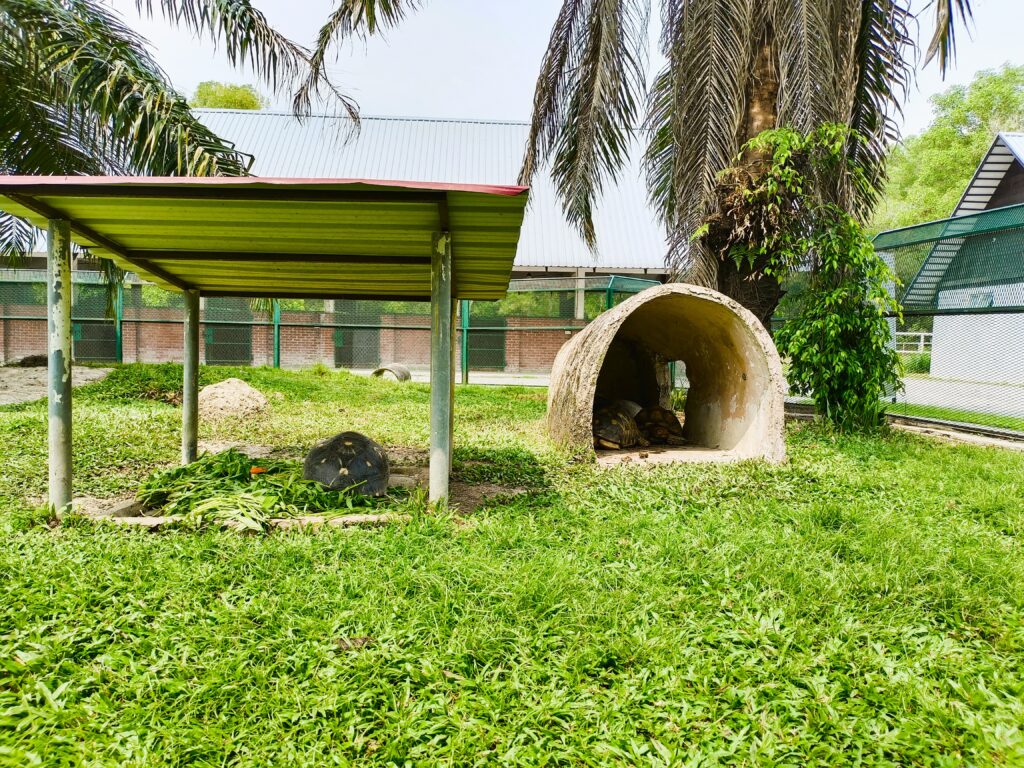
Stables
Stay tuned for further updates on the availability of horseback riding activities at Paya Indah Wetlands!
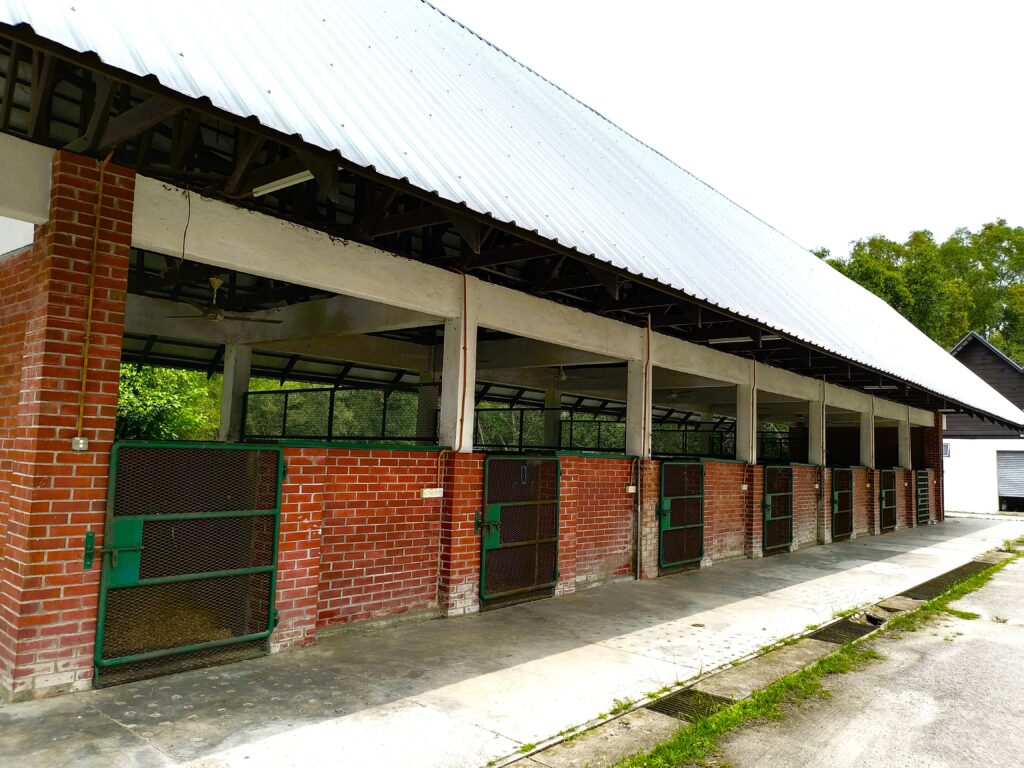
Pelican & Others Birds
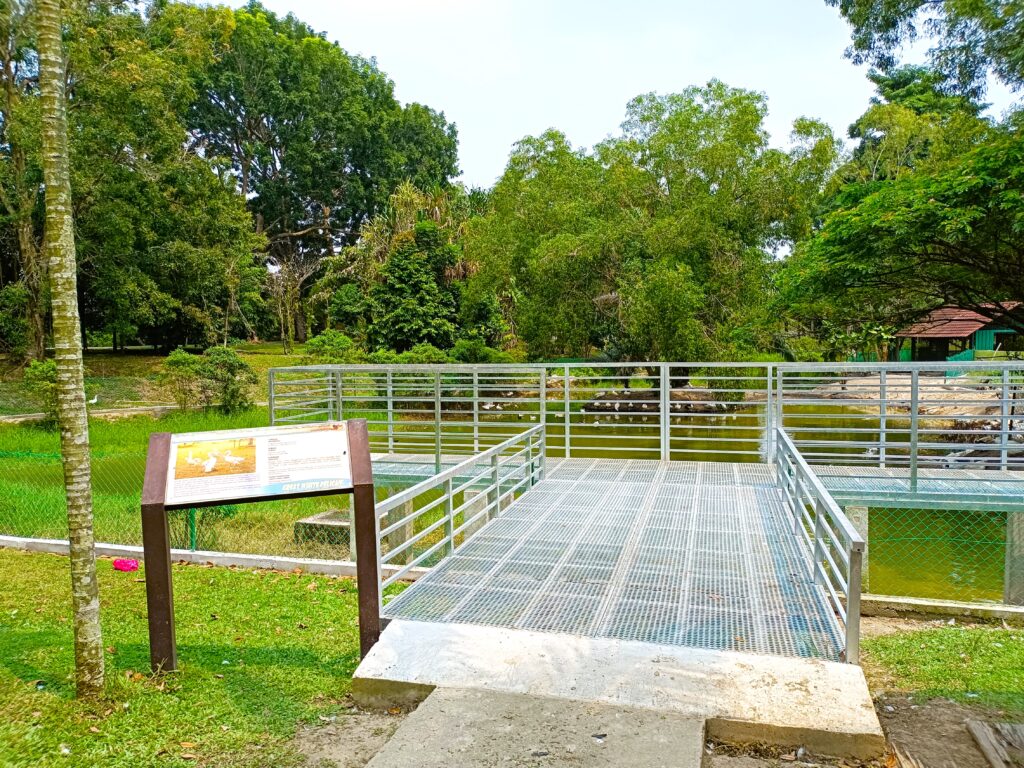
Paya Indah Wetlands stands out as a haven for wildlife and nature enthusiasts, distinguished by its approach to conservation and visitor experiences.
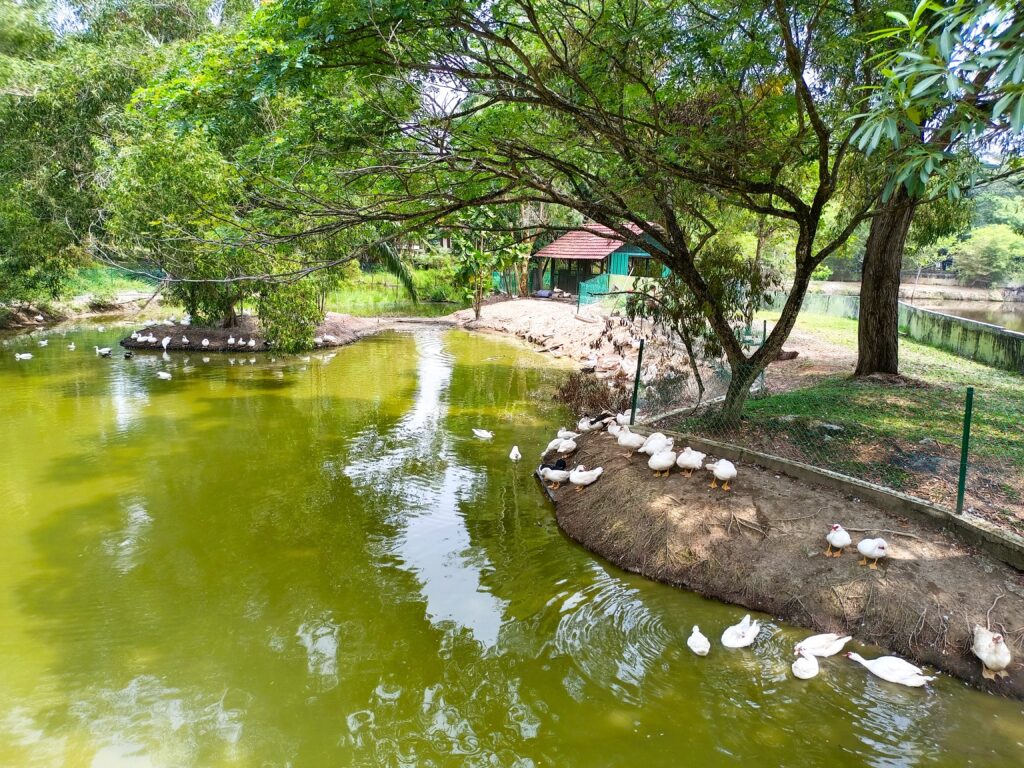
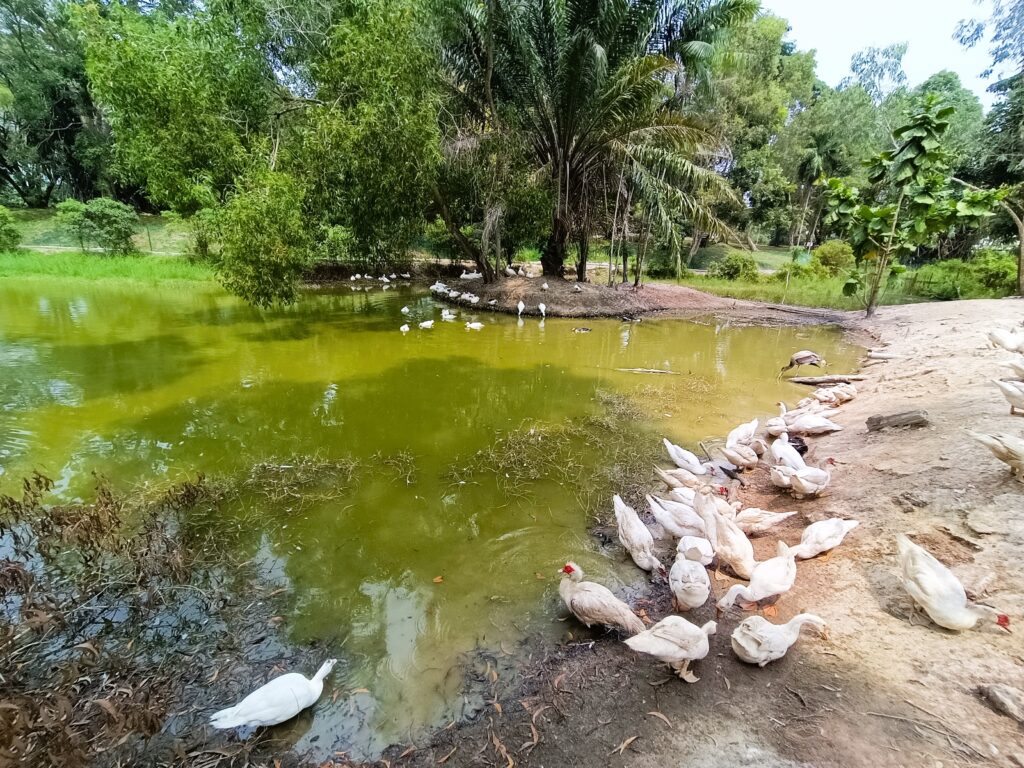
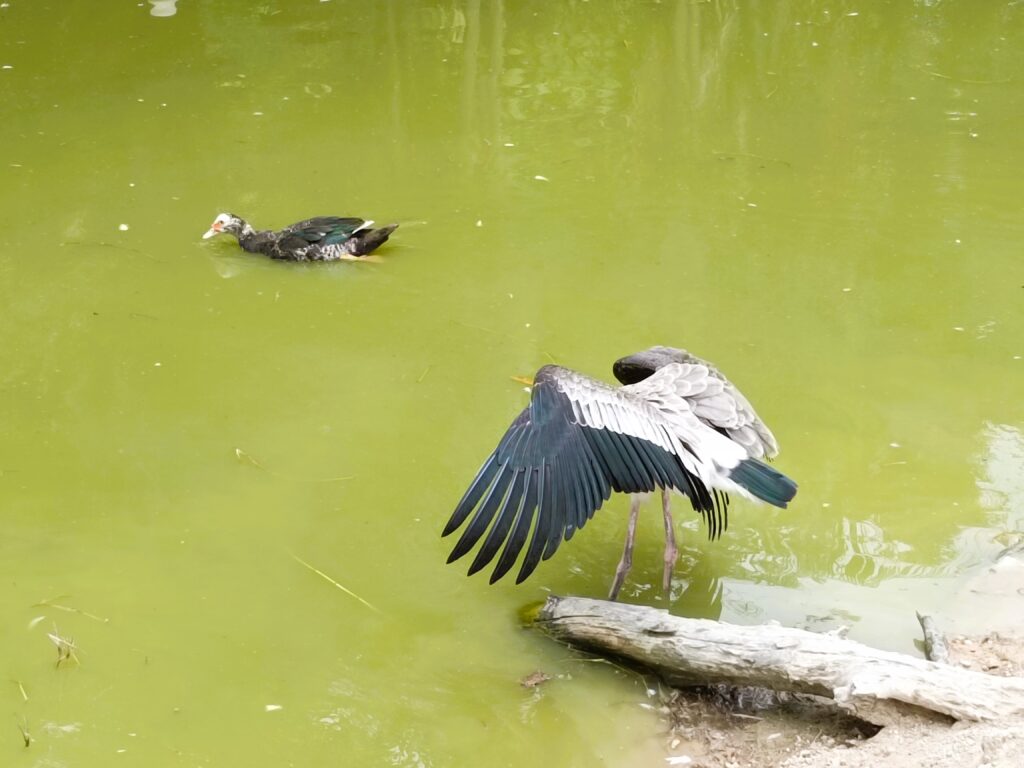
Great White Pelican
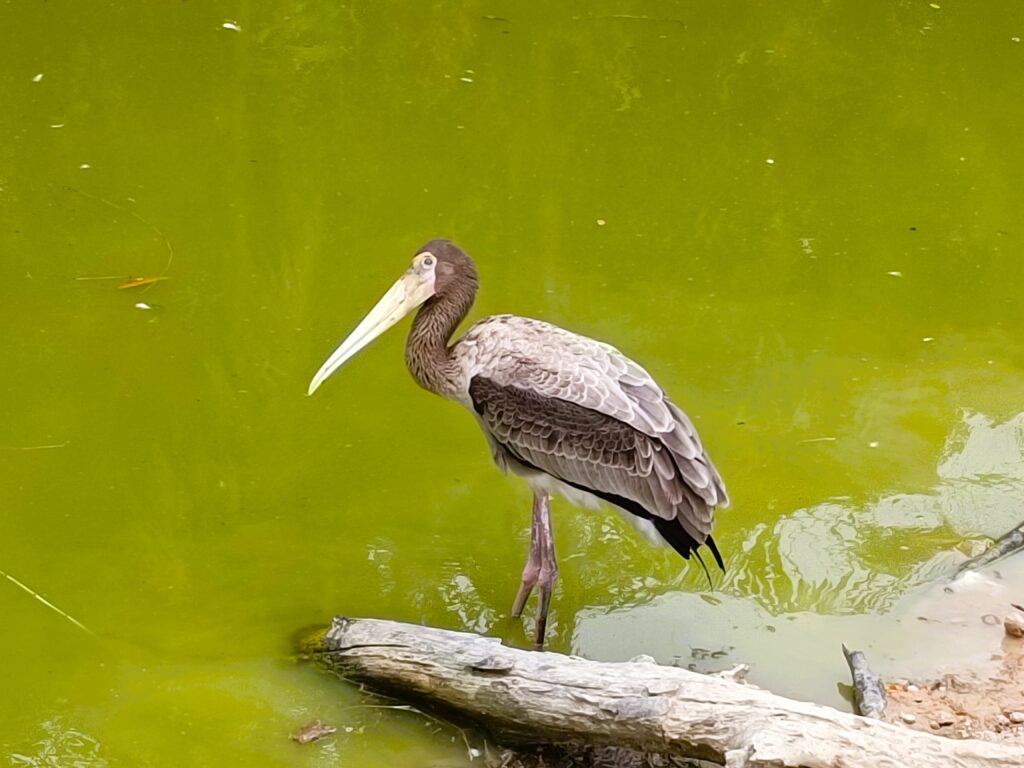
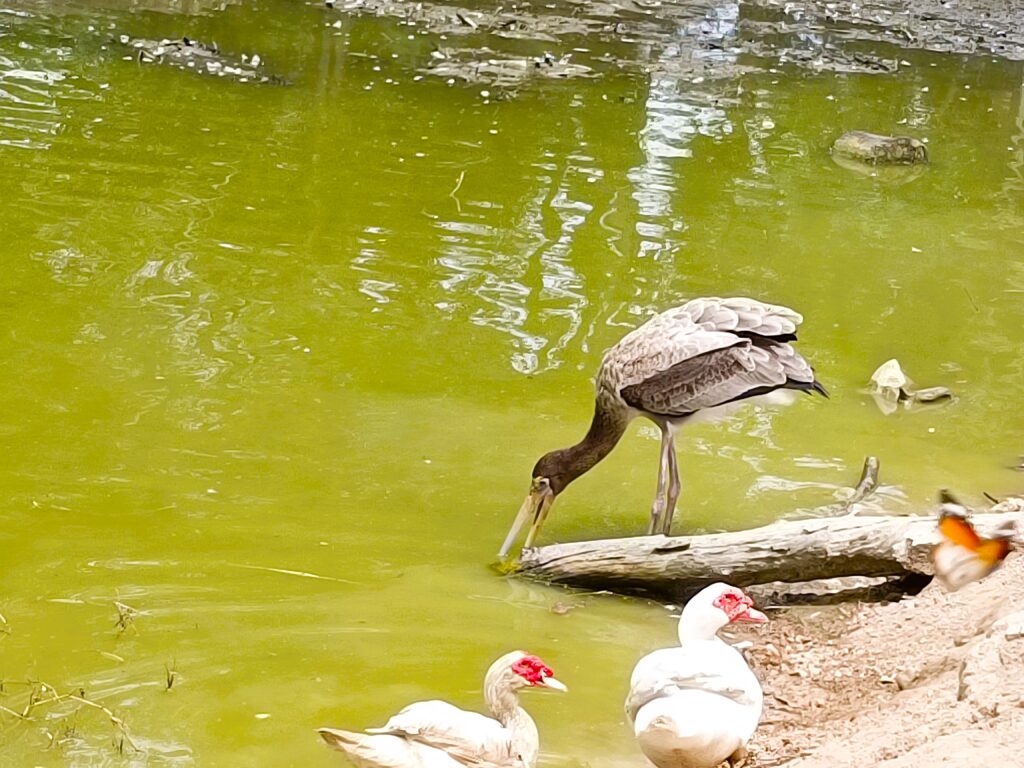
Verdict
Paya Indah Wetlands sprawls across an expansive territory, its vastness offering a glimpse into the untamed beauty of the region’s original wetlands.
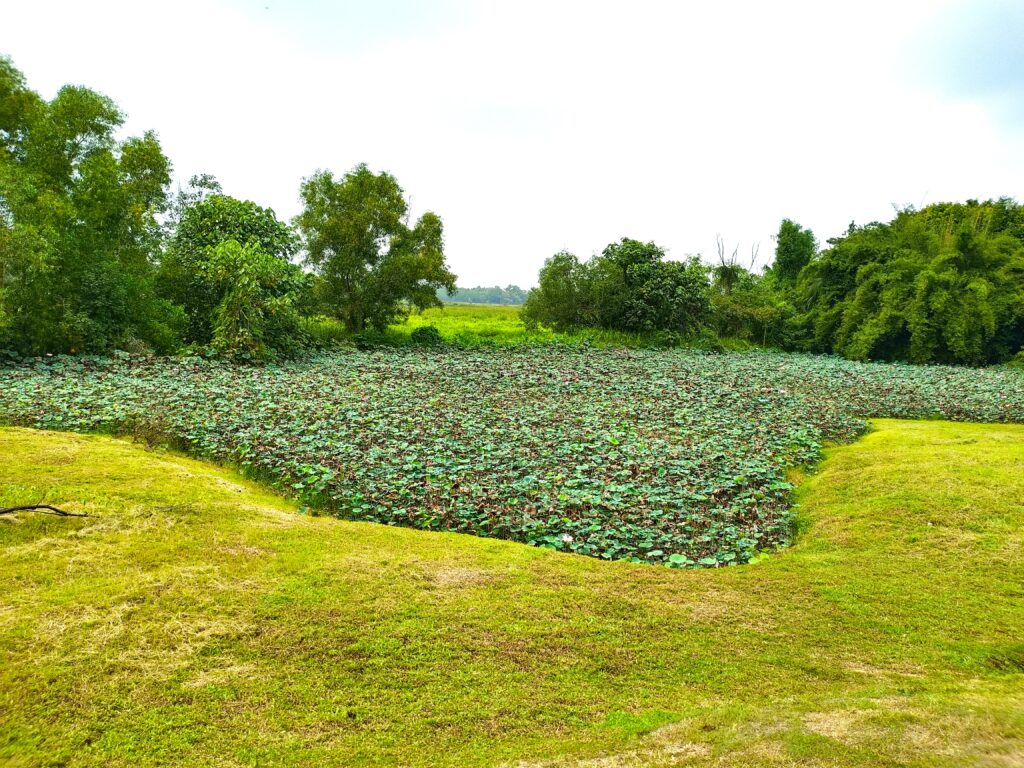
The future holds the promise of an array of new and exciting attractions that will further enhance the park’s appeal.
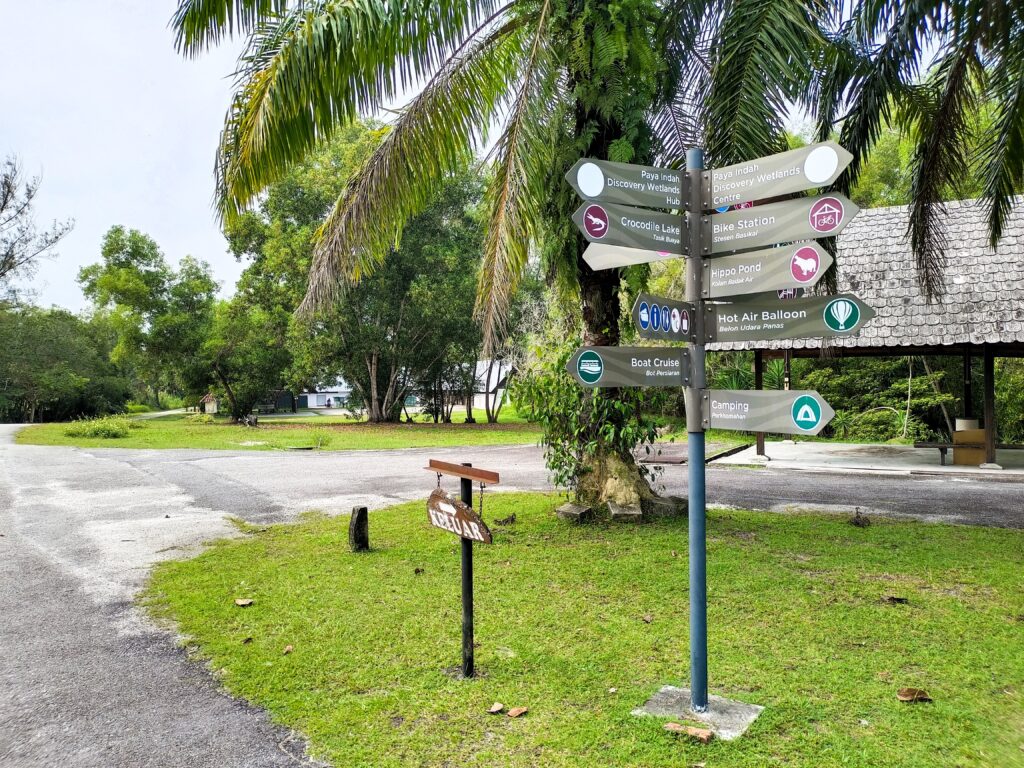
If you want more food and travel = Foodveler information, don’t hesitate to reach out to Foodveler on WhatsApp!
Paya Indah Wetlands
🚦 Travel Guide - Self-driving is recommended: The park is quite large, and driving allows you to explore at your own pace.
🕰️ Opening Hours - Daily 7:30am - 7pm
⏳ Recommended Visit Time - Morning: The weather is usually cooler in the morning. Avoid visiting on rainy days.
💰 Entrance Fee - Free
🕰️ Estimated Playtime - 2 hours
👚 Attire - Dress comfortably for exploration.
👨👩👧👦 Children/Seniors/Persons with Limited Mobility - Please supervise children closely and ensure they do not approach the hippos too closely during feeding time.
📸 Special Note - Hippo Feeding: 10am every morning; Crocodile Feeding: 11am on weekends and public holidays.

